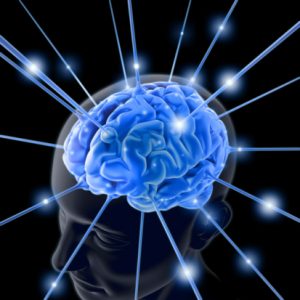 New Age thought control techniques continue to evolve, and the latest version attempts to marry the Law of Attraction with neuroscience and the Reticular Activating System of the brain. It’s catching on, even in some Catholics circles where it’s being used in spiritual formation. What’s it all about and can Catholics use it in their quest for sanctity?
New Age thought control techniques continue to evolve, and the latest version attempts to marry the Law of Attraction with neuroscience and the Reticular Activating System of the brain. It’s catching on, even in some Catholics circles where it’s being used in spiritual formation. What’s it all about and can Catholics use it in their quest for sanctity?
The best way to answer this question is by explaining the Reticular Activating System (RAS), the Law of Attraction, and the Christian notion of putting on “the mind of Christ” because this is the simplest way to explain the obvious differences between these concepts.
According to neuroscience, the RAS is part of the brainstem reticular formation which performs a crucial role in maintaining behavioral arousal, consciousness, and motivation. It is a thin, 2” inch-long pencil-like structure that sits just above the spinal cord which is where all the senses come into the brain. What the RAS does is connect the subconscious with the conscious part of the brain.
As this video explains, the RAS acts as an information filter, which some have described as a kind of “google” for the brain that sifts through all the information stored there and brings into your conscious mind whatever you’re looking for. For example, if you’re looking for the color blue, the RAS will help you to find all the blue objects in a room. If you want to buy a red Toyota, you’ll suddenly start seeing red Toyotas everywhere.
The Law of Attraction (LOA) on the other hand, is a belief that our thoughts can attract into our lives whatever we’re focusing upon, and it does so through a mysterious power of the universe.
As this site explains, “It is believed that regardless of age, nationality or religious belief, we are all susceptible to the laws which govern the Universe, including the Law of Attraction. It is the Law of Attraction which uses the power of the mind to translate whatever is in our thoughts and materialize them into reality.”
In other words, the RAS enables you to notice what you’re looking for, the LOA brings to you whatever you’re looking for. It’s the difference between noticing red Toyotas and creating red Toyotas.
These differences are quite apparent and make it obvious that science has not validated the Law of Attraction as some believe, but New Agers have a gift for muddying even the most clear science and then selling it as something so powerful you’d be a fool not to buy it.
 Here’s an example of how they do this. In legitimate science, psychologists have found that proper formation of the RAS can help people to follow through on their intentions. As this video explains, when we say that we “hope” to reach a goal, or “want” to reach a goal, this allows too much doubt into our minds; but when we say that we “intend” to reach a goal, we are much more likely to achieve it, not because the RAS makes it happen, but because it helps us to see and understand what will help us to achieve our goal.
Here’s an example of how they do this. In legitimate science, psychologists have found that proper formation of the RAS can help people to follow through on their intentions. As this video explains, when we say that we “hope” to reach a goal, or “want” to reach a goal, this allows too much doubt into our minds; but when we say that we “intend” to reach a goal, we are much more likely to achieve it, not because the RAS makes it happen, but because it helps us to see and understand what will help us to achieve our goal.
New Agers acknowledge this, but then take it a step further – right out of the realm of science and into the world of pseudoscience.
“When you set your intent, you are marrying your subconscious mind with your conscious will to make something happen,” this New Age site explains. “Your subconscious mind and conscious mind are a system that co-exists within a larger system that we call reality. When we set our intent, we are influencing both our inner reality, and our outer reality in a way that sets a chain of events into motion…”
Notice how the New Age version take intent and gives it the power to “set a chain of events in motion,” as if the mind is capable of altering physical reality.
As preposterous as it is, this form of “thought control” has begun to creep into Catholic circles, with some teaching that we can reform our RAS through the use of the imagination and visualization to “rewire” our brains in order to “correct” self-image problems or the bad effects of mother/father wounds that may be preventing us from having a deeper relationship with God. If this premise were true, it would mean that only the mentally and emotionally healthy can hope to enjoy a fulfilling relationship with God.
Nowhere in Scripture are we told that God’s work in our souls is impeded by our personal defects. We do not need to be healed before we come to God – we come to Him to be healed. He is more than capable of working around our woundedness and restoring us to wholeness. By introducing these kinds of gimmicks into Catholic spiritual formation, we run the risk of introducing people to the idea that if they just learn how to think a certain way, they can use their minds to control their physical and even spiritual destiny.
Is this what St. Paul had in mind when he instructed the faithful to put on “the mind of Christ”? (2 Cor 3:16)
 Not at all. Putting on the mind of Christ is not a “mental” exercise. It’s about personal transformation which can only come about through a change of heart that enables us to say, “It is no longer I that live but Christ who lives in me” (Galations 2:20).
Not at all. Putting on the mind of Christ is not a “mental” exercise. It’s about personal transformation which can only come about through a change of heart that enables us to say, “It is no longer I that live but Christ who lives in me” (Galations 2:20).
To achieve this reality requires the kind of deep inner conversion that results in the emptying of ourselves of all that is not of Christ, i.e., our sinfulness, inordinate attachments, etc. This long and arduous process of dying to self can take a lifetime to achieve because we are all wounded people in need of healing and restoration. No thought-control or brain-rewiring technique will ever be able to accomplish this kind of profound interior transformation, only an openness to the grace of conversion through participation in the sacraments, the reading of Scripture, the practice of the virtues, and a profound prayer life. These practices do indeed have the power to slowly “change our minds” but not in some magical way. Rather, these changes come about by acquiring a healthy self-knowledge that convinces us of our need for God. This realization, in turn, leads us to be more willing to open our hearts to God’s grace and allow ourselves to be changed from the inside out. Then, and only then, will our minds be “rewired.”
As Fr. Timothy McCauley writes, “…[T]he actual task of putting on the mind of Christ can be daunting and frightening. Why? Because we must give up the illusion of control in our own minds. As Christ Himself reminded us, ‘Those who lose their lives for my sake will find it.’ In a sense, we must lose our minds, or at least that part emanating from original sin and not conformed to Christ.”
We are deceiving ourselves, no doubt with a lot of help from the Evil One, when we believe that we can simply “reset” our minds by thinking a certain way and thereby becoming better people. This is nothing more than illusion. If we follow the instructions of St. Paul to the Philippians, to think about “Whatever is true, whatever is noble, whatever is right, whatever is pure, whatever is lovely, whatever is admirable . . . think about such things” we can acquire a better attitude and outlook, but this won’t change us as a person. These changes can only come about when the heart makes a firm decision to not only think a certain way, but to live a certain way, regardless of the cost, and to do so for God alone.
Father Ed Broom offers this beautiful prayer for those Catholics who want to “put on the mind of Christ” but without the New Age trappings:
“Lord, grant us the grace to have our minds lifted up on high. May our thought world be transformed into noble decisions, and such decisions into holy actions, and holy actions into virtues, and virtues into our transformation so that we can say with Saint Paul: ‘Put on the mind of the Christ; you have the mind of Christ; and it is no longer I who live but it is Christ who lives in me’.” (Phil. 2:5; 1 Cor. 2:16; Gal. 2:20)
© All Rights Reserved, Living His Life Abundantly®/Women of Grace® http://www.womenofgrace.com









